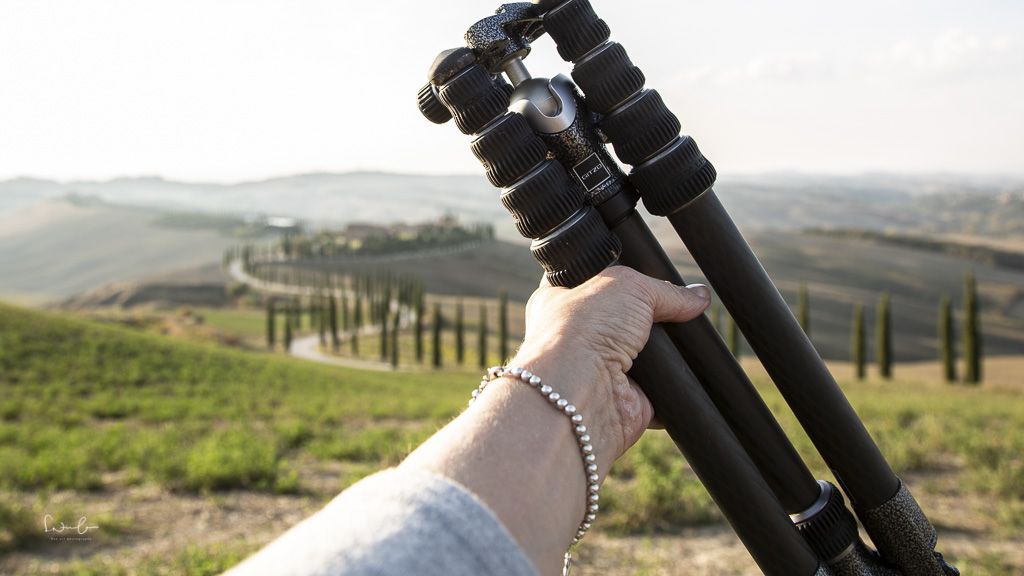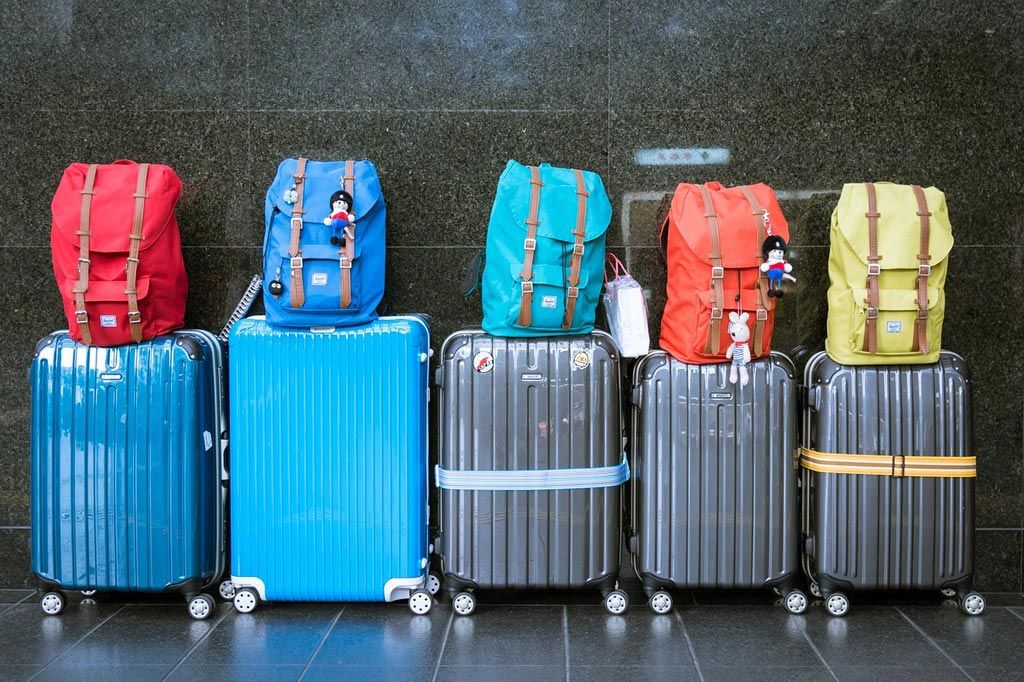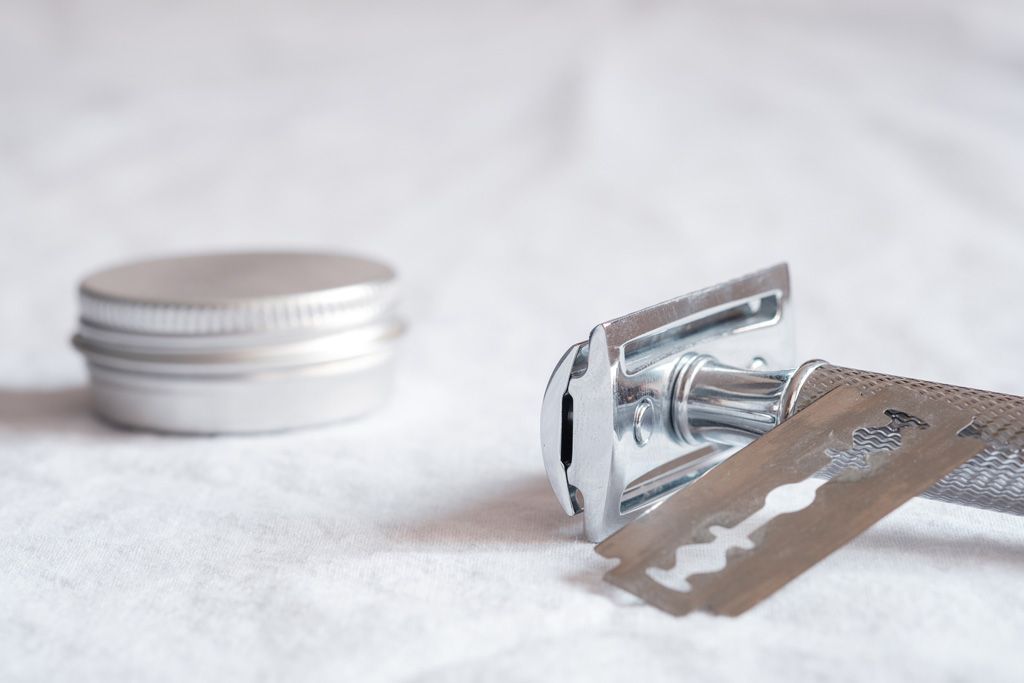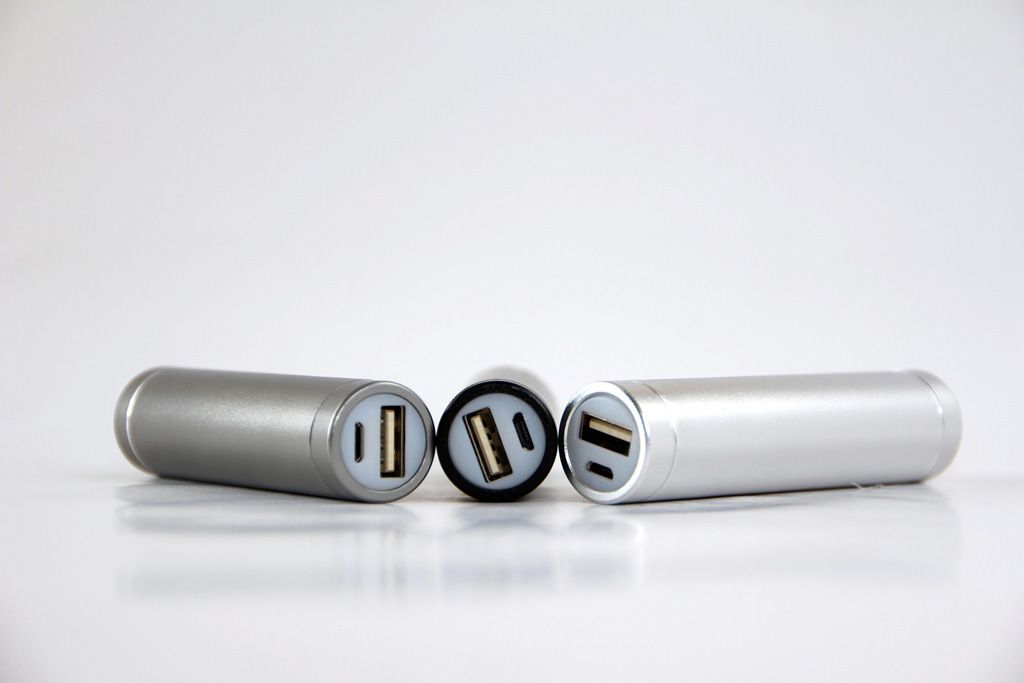Guest post by Laurens Galley
Have you considered going on a weekend trip with carry-on luggage only? A trip with a small and light suitcase certainly has its advantages. But what about the camera gear? The camera is allowed in your carry-on and you should always take it with you on board. It is definitely feasible to travel with reduced luggage plus photo equipment. However, before I go into the details of the camera in carry-on luggage, I first want to give you some general information about carry-on luggage and what advantages it offers to travel light.
My name is Laurens and since April 2018 I have been running the website Handgepaeck-Flugreise.de. I write about hand luggage. Among other things I deal with topics like size & weight, liquids in carry-on luggage and the question what items are permitted and which are not. I am helping air travelers to answer all their questions about hand luggage and air travel as comprehensively as possible. My site is a guidebook for carry-on luggage travelers to prepare perfectly for a trip.

Laurens
Handgepäck-Flugreise
What's the advantage of carry on luggage only?
Firstly you save money because a ticket without checked baggage is usually cheaper. Secondly, you have to carry less weight with you. At the same time, you don’t have to wait long for your luggage after landing and you can leave the airport immediately. Because of these reasons, a trip with carry-on luggage only is worth more than one consideration and there are a few more advantages that I will go into detail below. Even if you book checked baggage in addition to your cabin baggage, the following tips and guidelines will certainly make your next flight easier. After all, even if you are traveling with checked baggage, you probably won’t be able to completely do without hand-luggage, as certain items (camera, laptop, valuables) should always be on board with you.
Another advantage of traveling with carry-on baggage only is that it is impossible that your baggage gets lost. It is also very unlikely that something will be stolen from your bags because your belongings are close to you most all the time.
If you are now considering to travel light on your next trip, there are certainly a few more aspects you should bear in mind. For example the size and weight regulations or liquids on board.
Carry on luggage weight and size regulations
Each airline has its own size and weight requirements. Unfortunately, there is no standard rule for the dimensions of cabin suitcases. Therefore you should check them before every flight. The dimensions 55x40x20 cm have proven to be a good compromise for recommendations when comparing the size & weight regulations of different airlines. With a piece of hand luggage of this size, you will get through with almost all airlines, as most airlines either require exactly these dimensions (Condor/TUIfly) or are even a bit more generous in terms of size (Lufthansa Group). The above-mentioned dimensions used to be exactly what Ryanair required for hand luggage suitcases. For some time now, Ryanair has only allowed trolleys of this size in the cabin for an extra charge, otherwise, only a bag measuring 40x20x25 cm is permitted.
Some airlines only allow a maximum hand luggage size of 55x35x25 cm, so the above-mentioned dimensions would not fit. As these are only a couple of centimeters, in most cases it should not be a problem. Nevertheless, it is advisable not to take any risks with low-cost airlines and to adhere exactly to the prescribed size and weight specifications. For a better overview, here is an info chart with size & weight specifications of various airlines and some other important hand luggage rules:

Austrian Airlines allows 8 kg, the Emirates only 7.
By the way, many airlines allow you to take a personal item with you in addition to the usual carry-on bag. Usually, this means a small bag. This small bag can be, for example, a laptop bag, handbag, or a smaller camera bag.
Liquids in your hand luggage
If you want to take liquids on the plane, you have to consider two things:
1.
For each liquid, the pack size shall not be greater than 100 ml.
2.
Also, all liquid containers must be packed in a transparent and resealable 1-litre bag. This bag must be shown separately at the airport security check. The above regulations apply to all flights within Europe. In this case, in contrast to the size and weight regulations, a common EU regulation applies. The same or similar regulations apply to international flights
By the way, besides beverages, creamy products also count as liquids. That is why most hygiene and cosmetic products belong in the bag, too. These include deodorant rollers (also spray deodorants), hair gel, creams (of any kind), shampoo, shower gel and of course toothpaste. If your cosmetic products have a pack size of 150 or 200 ml, you can either decant them or buy smaller packs. Nowadays cosmetic products are available in small sizes that definitely contain less than 100 ml and are perfect for a journey with your carry-on luggage.
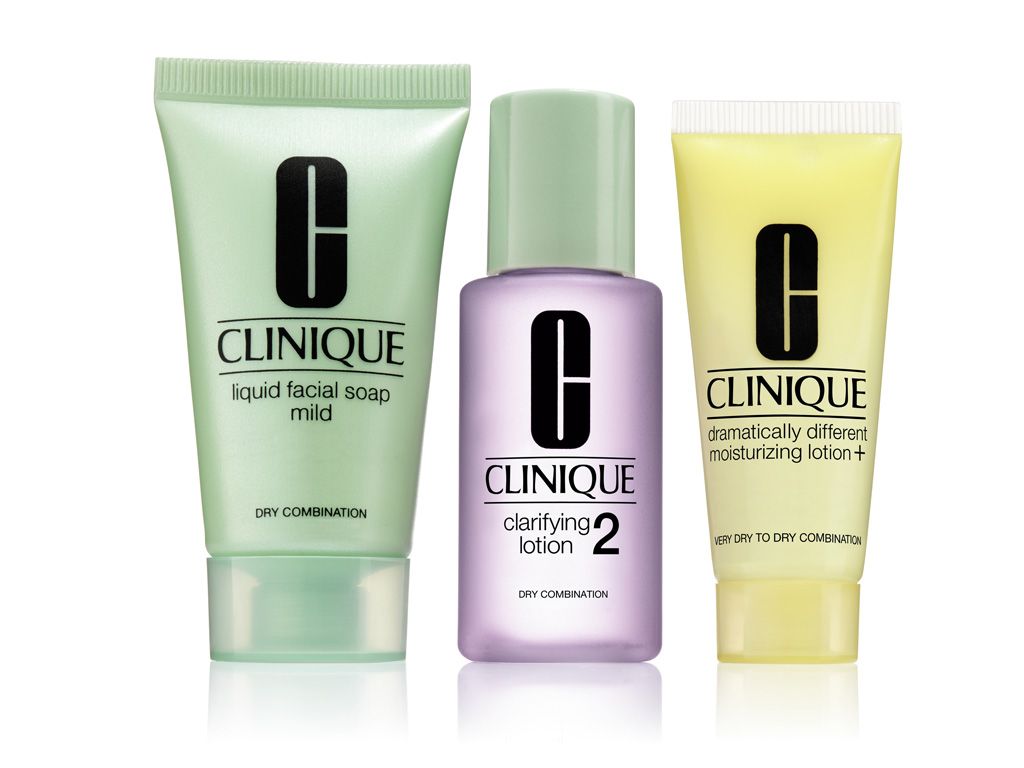
What else is prohibited or permitted?
Weapons of any kind are prohibited in hand luggage – this should go without saying… Classical weapons must not be brought into the aircraft cabin for safety reasons. This includes firearms (pistols and rifles) and knives (or long-pointed objects) longer than 6 cm. Fruit knives or pocket knives with blades shorter than 6 cm should not be a problem. It is also forbidden to take along objects that do not look like weapons per se but could be used as such. This includes tools, rackets (baseball bats, walking sticks) and also harmless things like knitting needles (because they are long and pointed). Reproductions of children’s weapons and toy weapons are likewise not permitted.
Furthermore, open razor blades are not permitted, only if the razor is an electric razor or a razor blade mounted in a plastic coating (the typical wet razor).
Laptops, powerbanks and electronics devices
You may carry your laptop in the hand luggage. Most airlines do not accept the laptop in checked baggage because of the fire hazard of batteries.
You are also allowed to carry your camera, lenses and mobile phone in your hand luggage. In particular, you should take these things on board, as they can easily be damaged in your checked baggage. Camera, laptop and other larger electrical devices are screened separately at the security checkpoint, so it is advisable to unpack them right out of your bag.
You may also take disposable batteries, power banks and lithium batteries into the aircraft cabin. The maximum allowed capacity is between 100 Wh and 160 Wh. It is generally forbidden to carry batteries, rechargeable batteries and power banks in checked baggage.
You may also bring other commercially available (small) electrical appliances such as electric razors, game consoles, electric toothbrushes, smoothing irons or ebooks on board without any problems.
Camera gear in your carry-on luggage
As already mentioned, cameras, as well as lenses, are allowed in your hand luggage and you can also take additional batteries with you. If you are travelling with carry-on luggage only, you should certainly consider carefully which camera and which lenses you wish to take with you.
If you have extensive equipment, you will definitely not be able to take everything with you, because the maximum hand luggage weight of the airline is an obstacle. After all, there are other things to consider in addition to photographic equipment.
First, you should find out whether the airline you are flying with allows a small bag in addition to the larger carry-on bag and what size restrictions apply to this small bag. You can store your camera and lenses in this bag. All other things for your trip will come in the larger carry-on bag. This makes sense for two reasons. First, you have more room in your larger suitcase for your clothes and other travel items. On the other hand, you keep your expensive camera safely with you in case you need to load the larger carry-on bag in the cargo compartment.
If the airline does not allow an additional small bag, then your camera and lenses must be in the large piece of your hand luggage. Either you pack your small camera bag in the carry-on bag or you use camera packing cubes or camera cubes. Both have their advantages and disadvantages. A packing cube is usually more space-saving and better padded than a small camera bag. A small camera bag, on the other hand, can be handy as you don’t have to carry around a big bag or hang your camera around your neck without protection.
No matter which of the two options applies to your trip, in both cases you should make sure you comply with the size and weight regulations. Especially the weight regulations can be a hassle. By the way, there are airlines which only guarantee to carry a small bag in the aircraft cabin at the lowest fare, and the larger carry-on bag has to go into the cargo hold. You should also take this into account when planning your flight.
If you are flying with checked baggage, you can consider a larger camera backpack as hand baggage. In this case, you are much more flexible when choosing which parts of your equipment to take with you on your journey. The dimensions and weight must, of course, be met but you have considerably more space for your equipment. With larger camera backpacks or camera bags, the padding is usually also much better and as a result, your equipment is even better protected. You may also stow the tripod with your other things in the suitcase.
It is also very important to weigh your suitcase after you have packed everything for your trip. Especially if you only fly with hand luggage, you should check the weight of your bag. It is best to check the weight at home before going to the airport. Here’s a tip: It’s best to pack your suitcase a day or two earlier. If you then notice during the packing that your luggage is considerably heavier than the maximum permitted weight, you can still add luggage to your booking. In many cases, this is cheaper than booking at the airline’s airport counter.
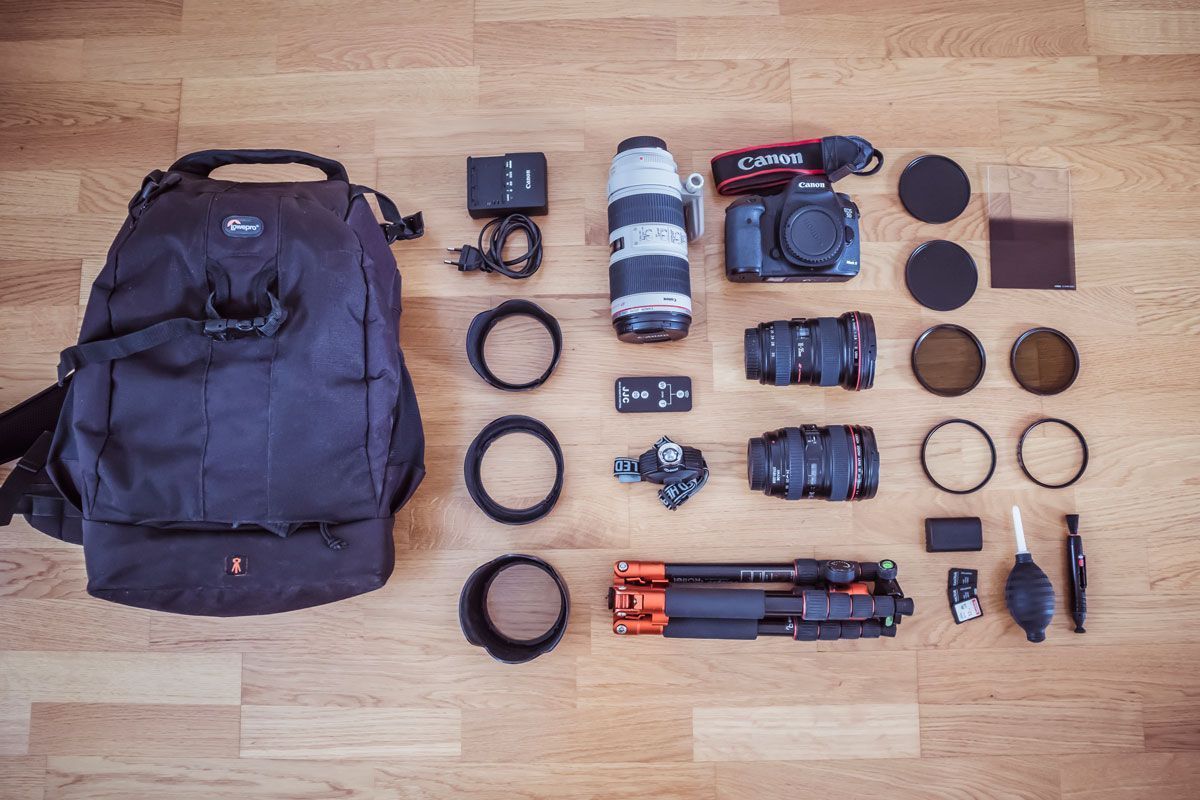
Tripod in your carry-on luggage
Taking a tripod in your hand luggage is a bit more challenging. On the one hand, a tripod takes up a lot of space in the carry-on bag and the weight limit is reached very quickly. On the other hand, you might have problems at the security check.
Long and blunt objects are forbidden in the aircraft cabin as they could be used as a weapon. As a result, a large tripod may be rejected at the airport security check and you may not be allowed to take it with you. As a result, and due to the size and weight restrictions of carry-on suitcases, you may want to take a small one with you. With a small & lightweight tripod, photographers usually have no problems at the security check. However, there have been individual cases when larger tripods have been a problem.
There are smaller tripods that weigh only about 1 kilogram with a size of no longer than 40 cm. Such a small tripod is usually not considered as a dangerous item. You also benefit from another advantage: A small tripod doesn’t take up as much space, so you have more storage space in your suitcase.
There is no general ban on tripods in hand luggage, but there is no guarantee that you will be able to take one with you.
